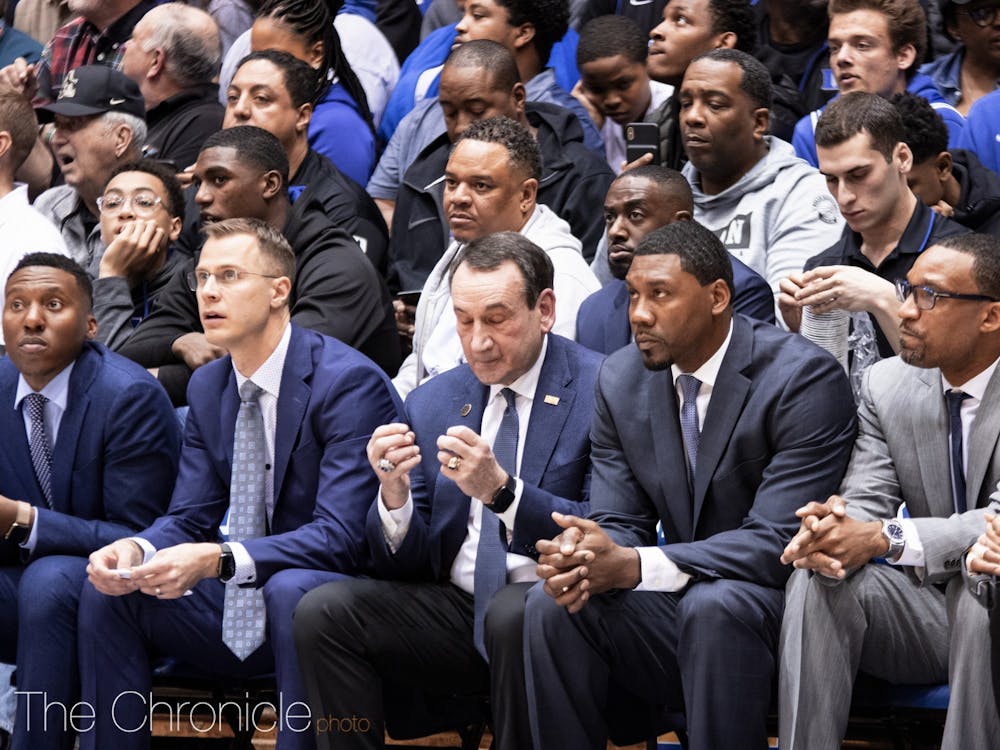“The more things change, the more they stay the same.” Clearly Jean-Baptiste Alphonse Karr was intimately aware of NCAA operations.
The NCAA announced Tuesday that its Board of Governors is moving toward allowing student-athletes to profit from their name, image and likeness (NIL) starting in the 2020-21 school year. This rather sudden announcement comes on the heels of their October decision to eventually allow students to use their NIL and after California had passed and Florida had filed bills that would allow such usage in their own states. After possibly the two most significant states in all of college athletics moved to institute these policies, it was inevitable that the NCAA would allow it across the board.
Just as inevitable was how badly the NCAA was destined to bungle its rollout. While the announcement was a major victory for student-athletes and boosters, the devil’s in the details for exactly what this will mean for Duke and its athletes, no pun intended.
Let’s run through the issues around the announcement and the full report. All page numbers mentioned below are in reference to that report:
NCAA Football/Basketball 21
At first glance, allowing NIL profiting should fix Electronic Arts' issue with the massively popular NCAA Football and Basketball video game series. The only reason they no longer exist is because they had to pay damages for illegal use of players’ NIL, to which EA responded that it was more than willing to pay the athletes if not for NCAA restrictions.
But it appears the return of the popular video games is not going to happen.
Officially-licensed sports video game franchises obtain player rights in the games with group licensing, which is negotiated through their union. Essentially, the players get paid through their representation, since negotiating with each athlete individually would be a nightmare. There are over 100,000 scholarship athletes in the FBS: completely unworkable without collective bargaining.
The Federal and State Legislation Working Group reported, however, that collective bargaining for athletes is not yet a consideration, since its infrastructure doesn’t exist yet (p. 7). Northwestern’s football players came quite close to unionizing recently—a local NLRB director found scholarship players were considered employees, and though the national board declined to effect jurisdiction, its Obama-appointed general counsel advised in favor of the players before the current Trump-appointed counsel rescinded such advice.
It would not be unreasonable to anticipate some D-I FBS programs attempting unionization if the Democratic nominee wins the 2020 presidential election, but until that point, Duke's Chris Rumph II will have to settle for only getting sacks on the field.
Restrictions
The Working Group didn’t specify too many concrete regulations in their report, but they did provide one monumental one: athletes still cannot profit while in uniform or using any schools’ trademarked property or facilities (p. 20). That remains the third rail for the NCAA, and the final frontier for securing a share of all sport-related profits for athletes.
If players can’t provide endorsements or participate in commercials with Duke gear or branding, then their profitability is based more on their own brand than the school’s brand. This means players like Zion Williamson and Tre Jones are going to be making the vast majority of commercial endorsements, while others like Brennan Bresser and Mike Buckmire will have little earning power on their own.
Boosters
Despite the NCAA’s insistence against “NIL payments being used as a substitute for compensation related to athletics participation or performance” (p. 7), that’s already happening, and has been for years. While that could come down if they’re allowed to pay players for advertisements, “cash now” is always a more effective recruiting strategy than “cash later" (or some cash alternative).
While Duke basketball appears to be one of the cleaner programs in the country, boosters still play an enormous role in any major FBS or college basketball power’s success. In a metropolitan region of 500,000 people—bigger than any comparable basketball power, save for the one Duke shares that region with—there should be a good number of opportunities to sign endorsements.
Recruiting and Geography
College basketball is distinct from college football in many of its blue blood programs are in mid-sized metropolitan areas. College football, on the other hand, has historical powers in half of the top-15 most populous combined statistical areas in the U.S.
In other words, New York and San Francisco aren’t pulling for the next Zion, but they will be for the next Daniel Jones (well, San Francisco will be). With a multitude of football powerhouses able to lure recruits with more exposure, it would come as no surprise to see Duke football lose even the handful of four-stars and higher-end three-stars they currently sign. However, don’t expect basketball to take a hit anytime soon.
The Working Group anticipated this, of course (p. 2), though they have yet to formulate any ideas on how to maintain “the integrity of the…recruiting process” (p. 24). Frankly, it’s quite difficult to envision a system where recruits aren’t enticed by the greater opportunity available in the biggest cities.
Anyway, by the time USC or UCLA or Washington or Rutgers-after-an-earthquake-shifts-them-closer-to-New-York build up enough clout to offer the kind of endorsement deals that will make basketball recruits think twice about Duke, they’ll all be going straight to the NBA.
Get The Chronicle straight to your inbox
Signup for our weekly newsletter. Cancel at any time.

